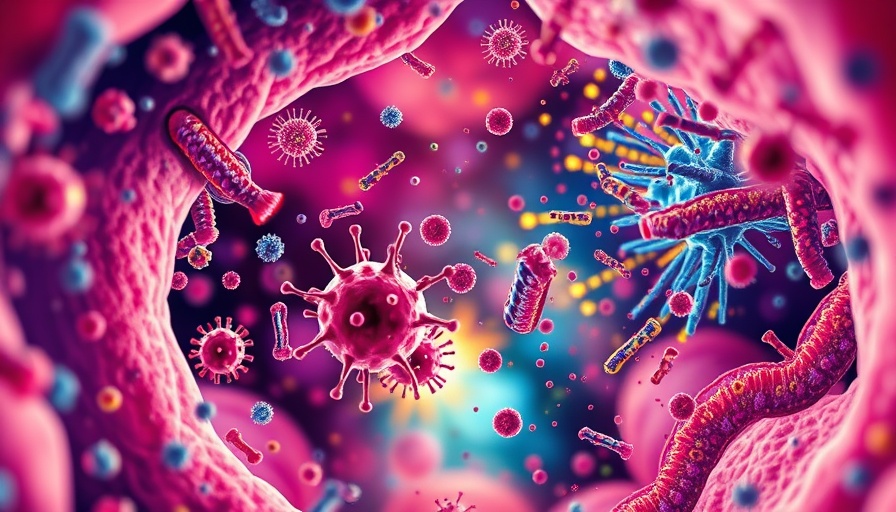
Unveiling the Bacterial Connection to COVID-19 Risks
In a groundbreaking study from George Washington University, new insights emerge regarding the role of nasal bacteria in COVID-19 vulnerability. This research, published in EBioMedicine, reveals a significant link between specific nasal bacteria and the expression of critical proteins that facilitate SARS-CoV-2 entry into human cells. This connection could reshape how we understand the factors influencing individual susceptibility to COVID-19 and other respiratory infections.
Understanding the Data: How Bacteria Influence Infection Rates
Utilizing nasal swab samples from over 450 individuals, the study unveiled that those who contracted COVID-19 exhibited higher levels of gene expression for two proteins: ACE2 and TMPRSS2. ACE2 acts as a gateway for the virus, while TMPRSS2 activates it upon entry. Noteworthy findings demonstrated that individuals with elevated protein expression were over three times more likely to test positive for the virus, underscoring the potential role of nasal bacteria in health outcomes.
Why Bacteria Matter: The Role of the Nasal Microbiome
The researchers delved into the nasal microbiome—the community of bacteria residing in the nose—to explore its influence on viral susceptibility. They identified crucial players: Staphylococcus aureus, Haemophilus influenzae, and Moraxella catarrhalis/nonliquefaciens were associated with increased expression levels of ACE2 and TMPRSS2. In contrast, the presence of Dolosigranulum pigrum was linked to lower viral entry protein levels. This nuanced understanding of the microbiome’s role opens new avenues for potential intervention strategies against COVID-19.
The Gender Factor: An Unequal Battlefield
This study also sheds light on the observed gender discrepancies regarding COVID-19 infection rates. Women generally showed higher levels of gene expression for viral entry proteins, aligning with previous studies. However, men exhibiting elevated levels were more susceptible to infection. These findings suggest that biological differences play a critical role in how COVID-19 affects individuals differently, warranting a closer examination of gender-specific treatment and prevention strategies.
Future Directions: What Lies Ahead in Research?
The implications of these findings could pave the way for fresh approaches in public health and personalized medicine. As researchers continue to investigate the complex interplay of the nasal microbiome and respiratory diseases, potential avenues for therapeutic interventions may emerge. Probiotics targeting beneficial nasal bacteria, for instance, could become a complement to vaccination strategies, enhancing an individual’s immune response against COVID-19.
Equipping for the Future: Decision-Making Insights from New Research
As business leaders and health professionals, understanding these emerging connections can influence strategic planning, healthcare communications, and wellness initiatives. Tailoring corporate health programs to include insights about nasal microbiome health may enhance employee wellness, especially in industries hit hard by COVID-19. This knowledge not only equips individuals with the insights necessary to protect themselves but may also drive corporate policies that prioritize employee health in a post-pandemic world.
Conclusion: Taking Early Action Can Make a Difference
The discovery of the link between nasal bacteria and COVID-19 vulnerability highlights an innovative line of inquiry into combating respiratory infections. As we gain a clearer understanding of individual susceptibility profiles, taking proactive measures such as enhancing nasal health could become an integral part of public health strategies. For businesses, this is an opportunity to consider how microbiome health can play a role in wellness programs, leading to healthier workforces.
 Add Row
Add Row  Add
Add 




 Add Row
Add Row  Add
Add 

Write A Comment